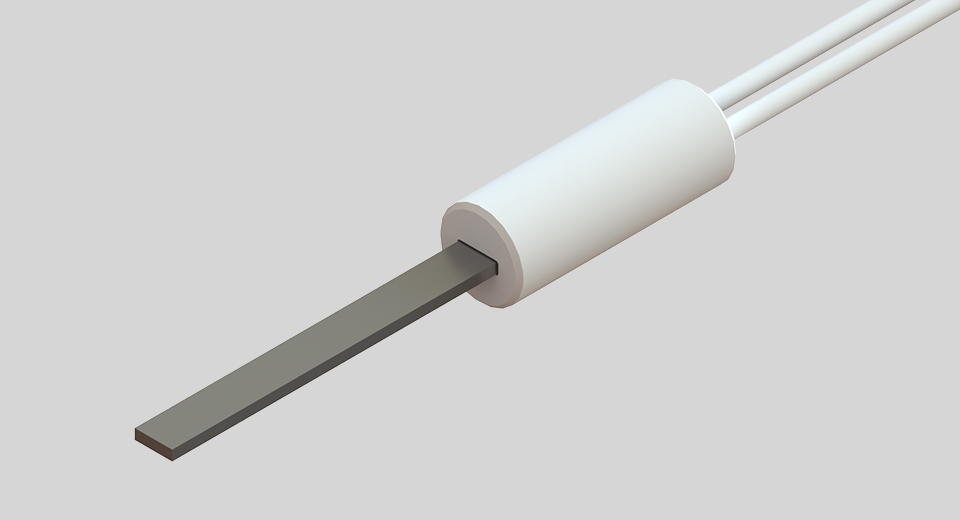Silicon nitride heater sensor for H2 burner temperature sensor/flame sensor

Day by day the number of companies developing hydrogen burner or hydrogen (H2) water furnace or boiler is growing very fast. In 2025 most of market leader gas water furnace manufacturer want to have H2 ready furnaces that can be use with 30% more H2 content in city gas mix.
However, even if H2 combustion have some advantages (efficiency, high heat output, less density), it also create many challenges for the engineer developing H2 water/boiler furnaces or burners.
For example H2 has a small molecular size, creating higher requirements to tightness of gas valves, pipes and connections.
Another particularity of hydrogen burning is that the flame is not ionizing (not carrying negative ion) so conventional flame rod / ionization electrode cannot be used as flame sensor. A solution can be to use UV optical sensor, but that create many problems. Here in order to remedy to this, the PTC characteristic of silicon nitride heating element can be advantageously used as robust H2 ready flame sensor solution, but also can measure the flame temperature and thus optimize the combustion of the H2 burner.
All advantages of silicon nitride PTC sensor:
- Can be use not only as flame sensor but also flame temperature sensor
- Very robust: non chemically sensible and high temperature resistant.
- No degradation in resistance vs life time.
- Long life time even in direct flame.
- Linear correlation of signal with temperature.
- Low mass inertia (quick response).
- Order made body, flange and cable production is easy.
Other advantages compare to UV or IR sensors:
- Relatively cheap compare to UV or IR sensors
- Passive using of PTC property (measuring resistance variation), not using any energy for detection.
- Don't need optical view or window to monitor compare to UV/IR sensor. The detection occurs directly in the flame. No problem of steam or vapor blocking UV sensor.
- Constant signal not falling down depending on air/gas mix like with UV/IR sensor. UV sensor low signal and flashing create problem with regulating burner. Silicon nitride sensor don't have such problem.
- Don't create false flame detection like UV sensor can do. It can be certify as Class C construction.